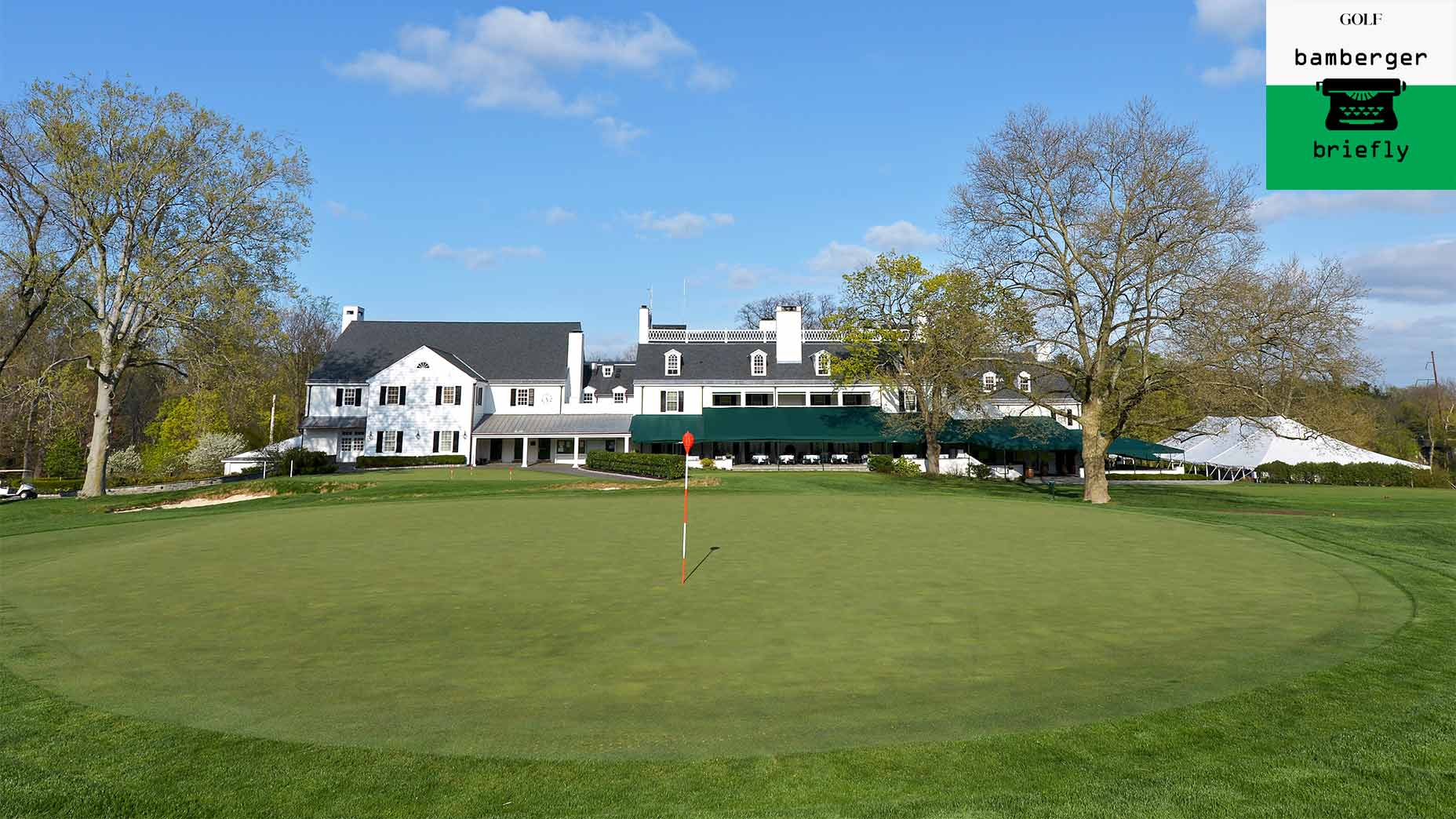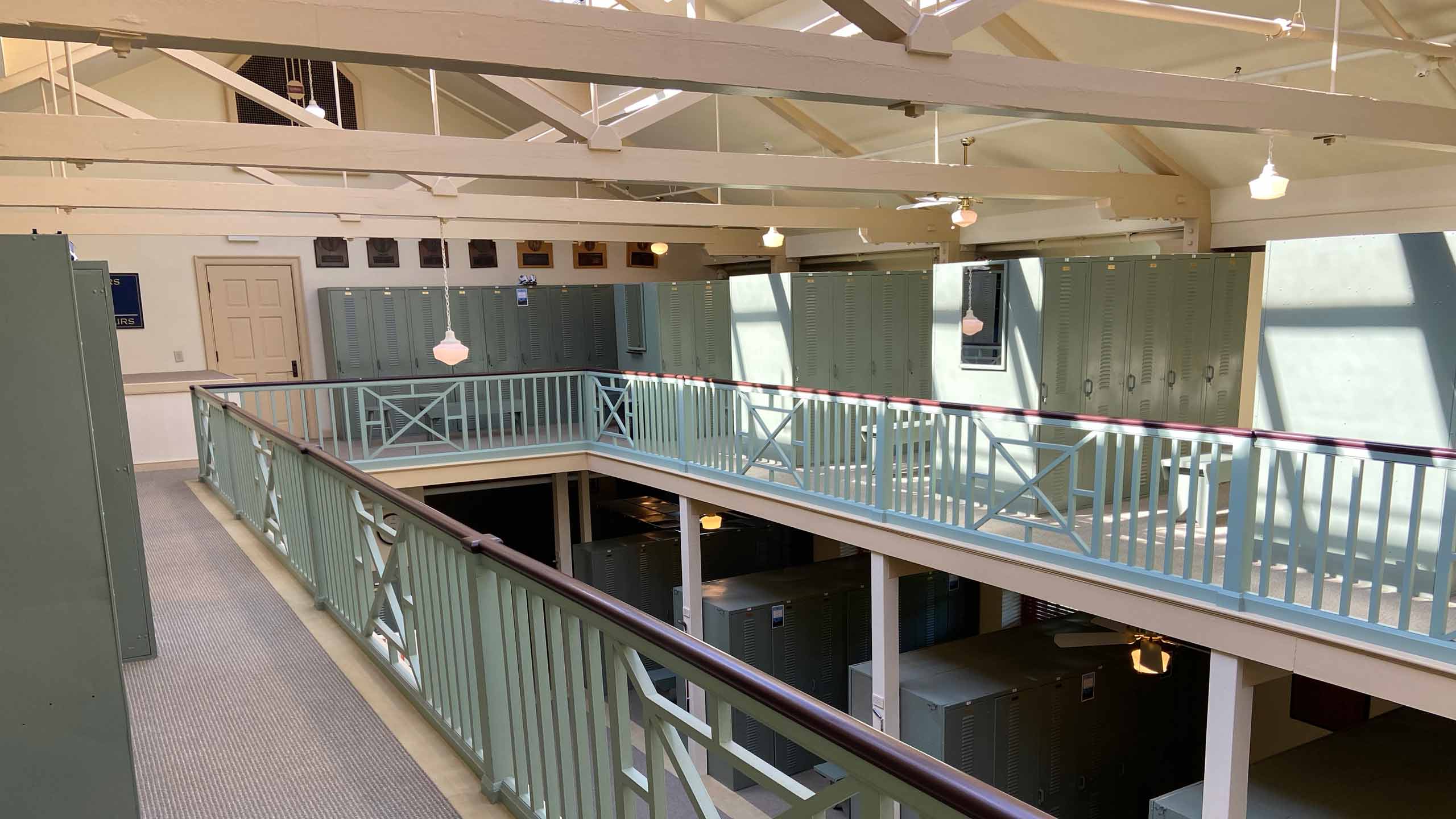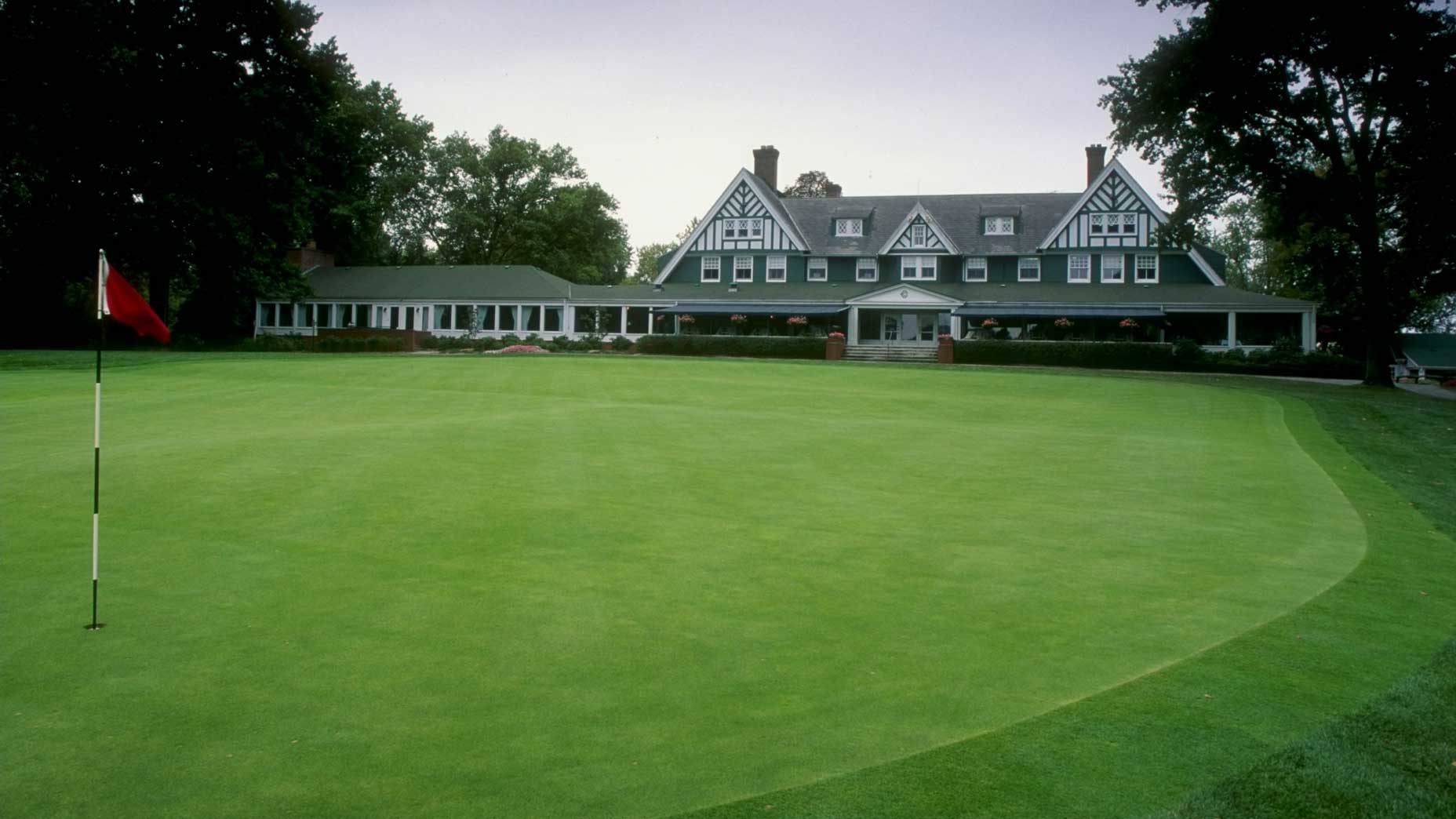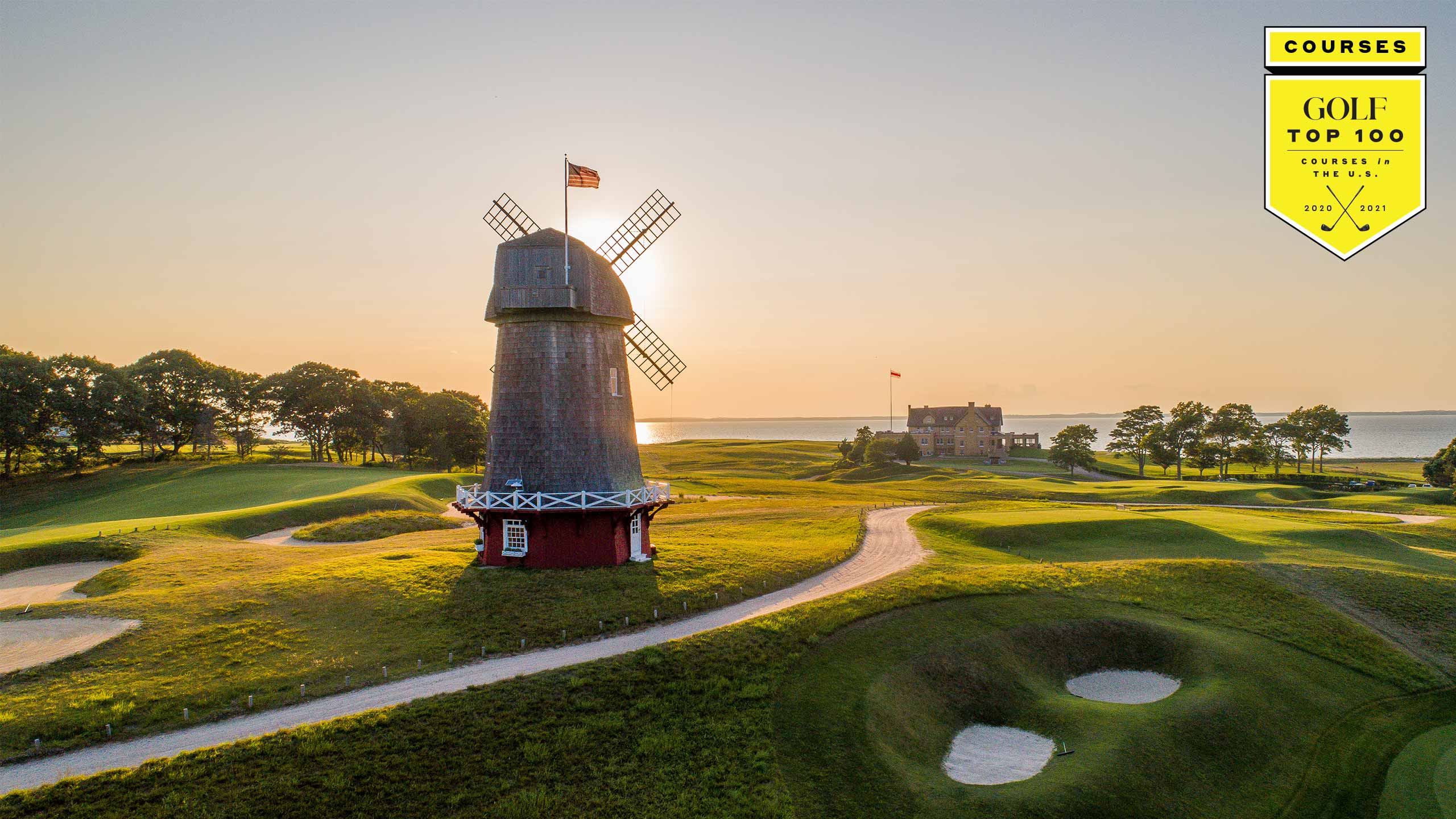What sets Merion apart? The wicker baskets, yes, but also so much more
- Share on Facebook
- Share on Twitter
- Share by Email
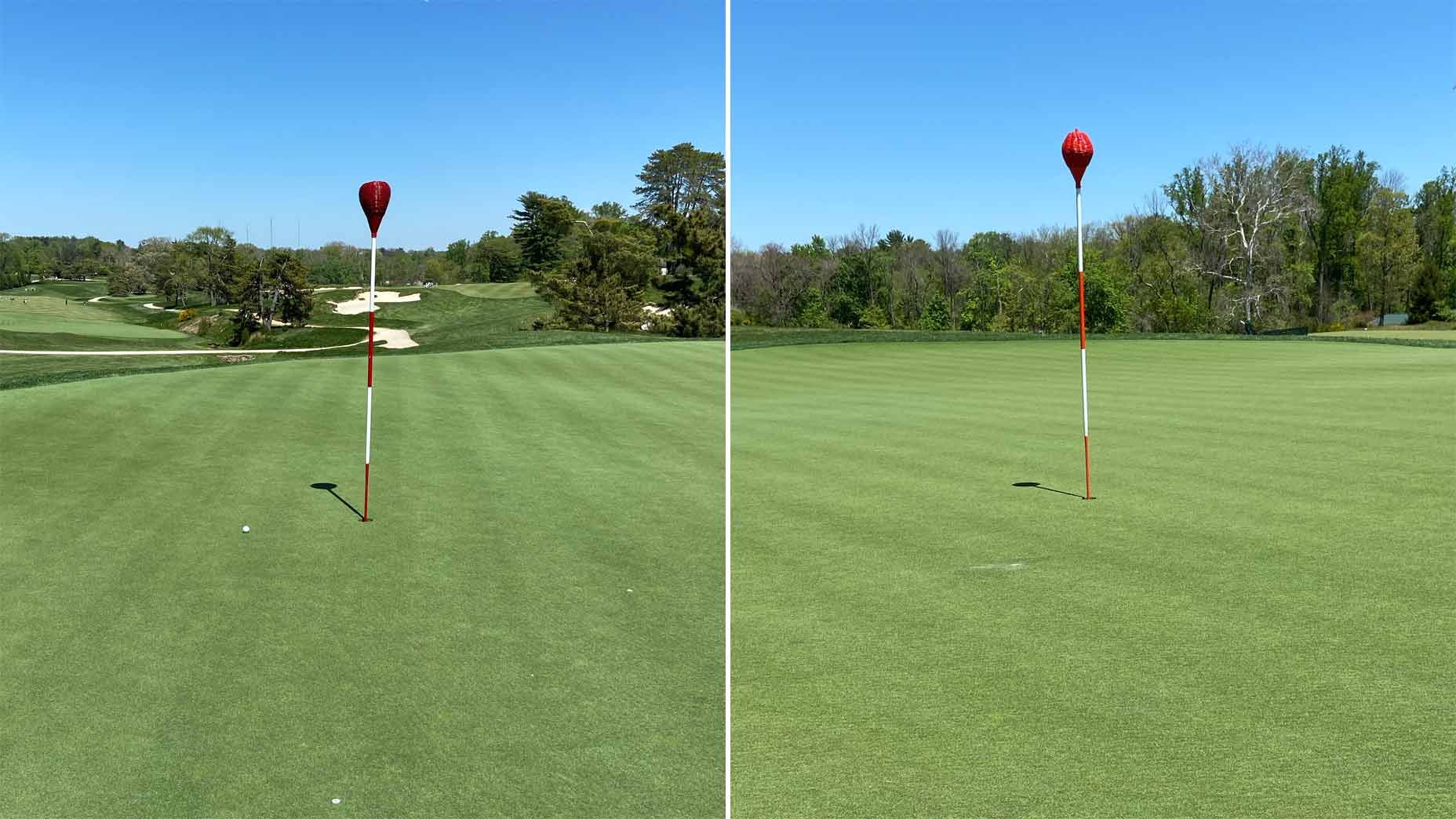
There are many things that make Merion Golf Club unique, but the wicker baskets on the greens stand out among them all.
Zephyr Melton
What was it about Merion Golf Club that felt different?
Perhaps it’s the stories I’ve read from the club’s legendary events. Or the decades of history commemorated in the clubhouse. Or just significance I had placed on my visit, knowing that getting to see — and play! — Merion ahead of this year’s Curtis Cup was bucket-list caliber stuff.
You know it’s going to be a good day when the staff gives you “the member treatment.” I was provided everything I needed throughout the day, and I even got a locker in the elegant stone-farmhouse clubhouse. And, of course, there was the golf course, routinely rated as one of the best in the world.
Set on a pristine plot of Pennsylvania farmland just west of Philadelphia, Merion’s East Course is a sight to behold. The Hugh Irvine Wilson design is not long by any modern standard (the tips just barely stretch to 7,000 yards), but don’t underestimate its mite. Positioning is key, and it’s quite easy to stray from the optimal path.
For future U.S. Opens, pros should be treated to a true Merion experienceBy: Michael Bamberger
But the biggest challenge, in my experience at least, is the putting surfaces. There are subtle (and not-so-subtle) slopes all over the greens, which makes getting the ball in the hole damn-near impossible. My caddie for the day, known around the club as “Duffy,” summed up the challenge well.
“We like to joke that they cut the holes at 4 inches instead of 4.25,” he said. “It’s just hard to get the ball in the hole.”
No joke.
But because we golfers are a simple people, the defining feature of Merion is simple, too: its one-of-a-kind flagsticks. In lieu of flags at the top of the sticks, wicker baskets sit in their place. Maybe the proper name should be “wickersticks.”
For diehard golf fans, this quirk of the course is common knowledge, and these baskets were the most exciting thing for me to get a glimpse of when I got to the course. It’s not often a flagstick can get my blood pumping, but like I said, things at Merion are different.
The exact origins of the wicker baskets are unclear. There are a handful of competing theories, but none that has been confirmed. All we know for certain is that in 1915, Merion’s superintendent William Flynn (yes, that William Flynn) received patent approval for his wicker-basket design. They’ve remained ever since. Mini-wicker-basket flagsticks even sit in the holes on the practice greens.
Mini wicker baskets on the practice green is a neat touch👀 pic.twitter.com/dVh2JzGIFy
— Zephyr Melton (@zephyrmelton) May 9, 2022
That’s not to say the wicker baskets haven’t generated some controversy over the years. In the 1949 U.S. Women’s Amateur, a contestant saw her ball ricochet off a basket, deflecting it away from the hole. The following year when the U.S. Open came to Merion, flagsticks replaced the baskets. It remains the only USGA championship contested at the club absent of the famed wicker baskets.
None of the players in our group experienced the misfortune of striking one of the baskets with our approaches, but the penalty for such a shot would be steep. The custom-made sticks that hold the baskets are made entirely of metal; a solid strike of the stick is unforgiving. Long ricochets are the norm.
There are other challenges that the baskets present. As caddie Duffy explained, without a flag atop the stick, judging the swirling winds can be difficult. And the baskets can make judging distance a challenge, too. According to Duffy, each basket is a different size, which can have a huge impact on distance perception.
“Some of them are little pinheads on top,” he said. “And some of them are a lot bigger. It can make the green look way further away if it’s a small one, or a lot closer if it’s big.”
You’d think that would make range finders a must, but even modern technology can fall prey to Merion’s baskets. Without a flag to lock in on, the lasers have difficulty picking up the stick.
USGA announces future U.S. Amateur sites, including return to Oakmont, Merion and Olympic ClubBy: Jessica Marksbury
“You’ve got to rely on the yardage book,” Duffy said.
No matter if I relied on the yardage book or more modern tech, Merion bared its teeth. I didn’t set any personal bests, but I came home with a respectable score. My day’s highlight? I made birdie when I holed a lengthy putt from off the green on the par-4 10th. I elected to pull the basket from the hole before striking the putt — if not, the ball may well have ricocheted to New Jersey.
By day’s end, my body was exhausted. I’ve never come away so battered from a 6,200-yard course. But I’ve also never had a wider grin on a post-round patio. As we sipped on our Merion IPAs (emblazoned, naturally, with a wicker basket logo on the can), we observed the grounds crew removing the baskets from the holes and replacing them with traditional white flagsticks.
The swap happens nightly as a way to deter any souvenir-seeking thieves. It would be a hell of a memento to hang above the fireplace, but, really, the wicker basket would look out of place anywhere but here.
It’s part of what makes Merion Merion.
Latest In Travel

Zephyr Melton
Golf.com Editor
Zephyr Melton is an assistant editor for GOLF.com where he spends his days blogging, producing and editing. Prior to joining the team at GOLF, he attended the University of Texas followed by stops with the Texas Golf Association, Team USA, the Green Bay Packers and the PGA Tour. He assists on all things instruction and covers amateur and women’s golf. He can be reached at zephyr_melton@golf.com.

